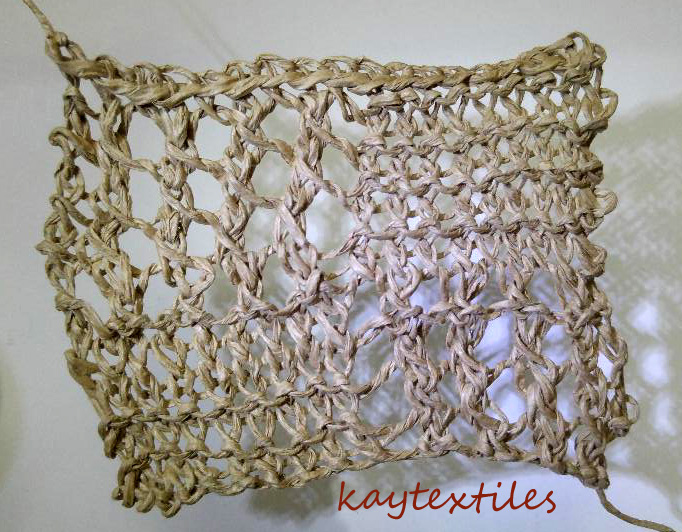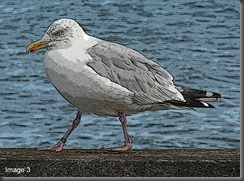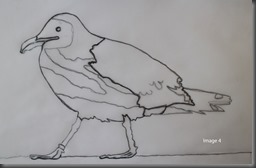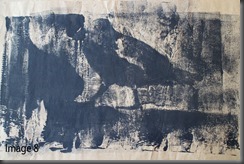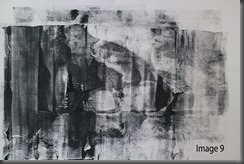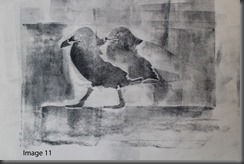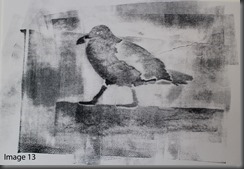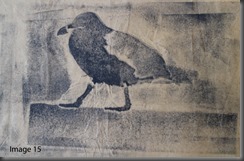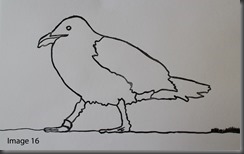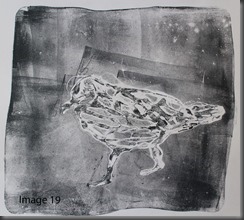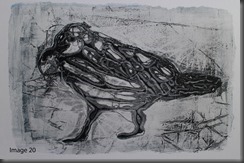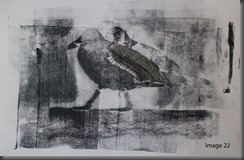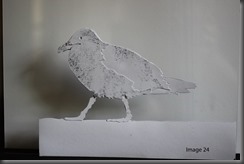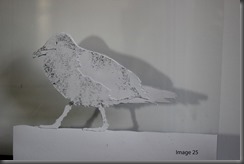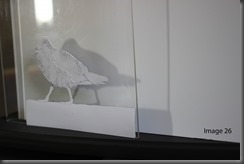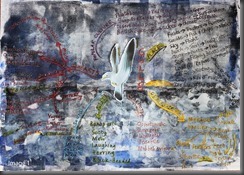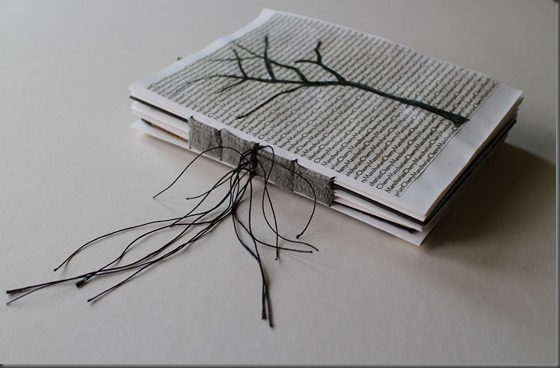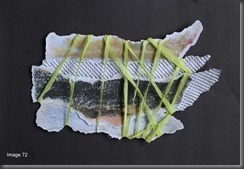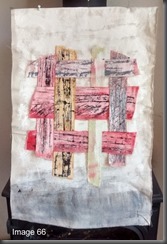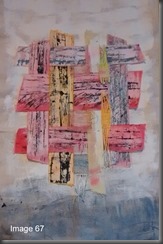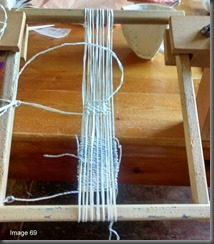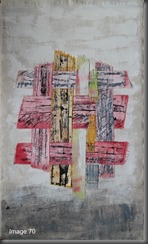So, ‘Gulls, with an emphasis on shadows’ and the start of a sketchbook. It will be A5 size and to retain flexibility will be handmade, with the cover and method of binding probably being decided on completion. There is, therefore, no restriction on the type, colour or weight of paper/material used…though after a trip to Seawhite’s factory shop there is currently a plentiful supply of 140gms extra wet strength!
Silhouettes, as Sian suggested, seemed a good place to start. Image 2 is a photograph of a Manx herring gull taken on the sea wall at Ramsey.
This was loaded into Adobe Photoshop Elements 11 and viewed using Filters>Artistic to see if any design possibilities presented themselves. The Poster Edges filter enhanced the image providing more pronounced internal and external lines (Image 3),
which were traced (Image 4)
and then made into a layered cardboard representation of the gull (Image 5).
An attempt was made to colour the reverse of the gull with papers to match the colours on the photograph. The shades of grey proved almost impossible to replicate so it was coloured with gouache, black drawing ink and yellow cut papers (Image 6).
A series of monoprints was made from the layered cardboard gull, laying the paper to be printing ontop of the gull and then brayering. As the relief of the cardboard layers was not pronounced (380 mic card), heavy weight papers did not produce a good printed image (Image 7).
Over-inking the brayer was also disappointing (Images 8 and 9).
Lighter weight papers were more successful, i.e. 45gsm layout paper and 75gsm printer paper. Some of the more interesting prints are below (Images 10 - 15).
The shadow effect in Images 10 and 11 look promising.
I particularly liked the multiple image prints which are in keeping with my research title.
Still familiarising myself with this shape, an outline of the gull was made with water and a brush. While this outline was still wet the it was emphasized with black drawing ink using a 0.5mm technical drawing pen (Image 16).
This might have given a more interesting result if I had used a thicker pen or other drawing implement with more ink.
A hot glue gun stencil/mask was made of the gull (Image 17). The thin strings of glue produced when making the stencil were left, luckily, as these gave very interesting images. Gelli prints were made using a home-made gelli plate – see calligraphycards-shazinoz blog gelli plate recipe.
The most promising images were those produced from the ghost print (Images 18 - 20) taking care not to over ink the brayer.
Note that taking a monoprint by placing the paper on top of the stencil and brayering on top was not successful as the stencil has no give and does not lend itself to this method of printing (Image 21).
One of the monoprints from the layered cardboard gull with a shadow gull behind was backed with iron-on Vilene and part stitched in raised chain band (Image 22 and 23). Raised stem stitch could probably have worked equally well to give a feathered effect.

ToDo - make a print block from both of these stitches.
The effect of light and shadow was tested on the layered cardboard gull.
Natural light – Image 24
Lit from the side with daylight bulb and photo taken from front – Image 25. I like the multiple shadows this produces, which might imply more than one light source on any piece of work to get the maximum effect from the shadows produced.
Lit from the side with daylight bulb and photo taken from the side – Image 26
Lit from above with daylight bulb and photo taken from the front – Image 27
ToDos:
- look into methods of producing translucent papers using wax and oil. I have already used this technique successfully with acrylic wax on tissue paper in my work with bees but think it needs further investigation to see the results with other papers/materials. Also investigate other materials that will give transparency.
- investigate shadow puppets/puppetry
- more research on light and shadow produced from different objects – solid, transparent, translucent, woven, outline, etc.
